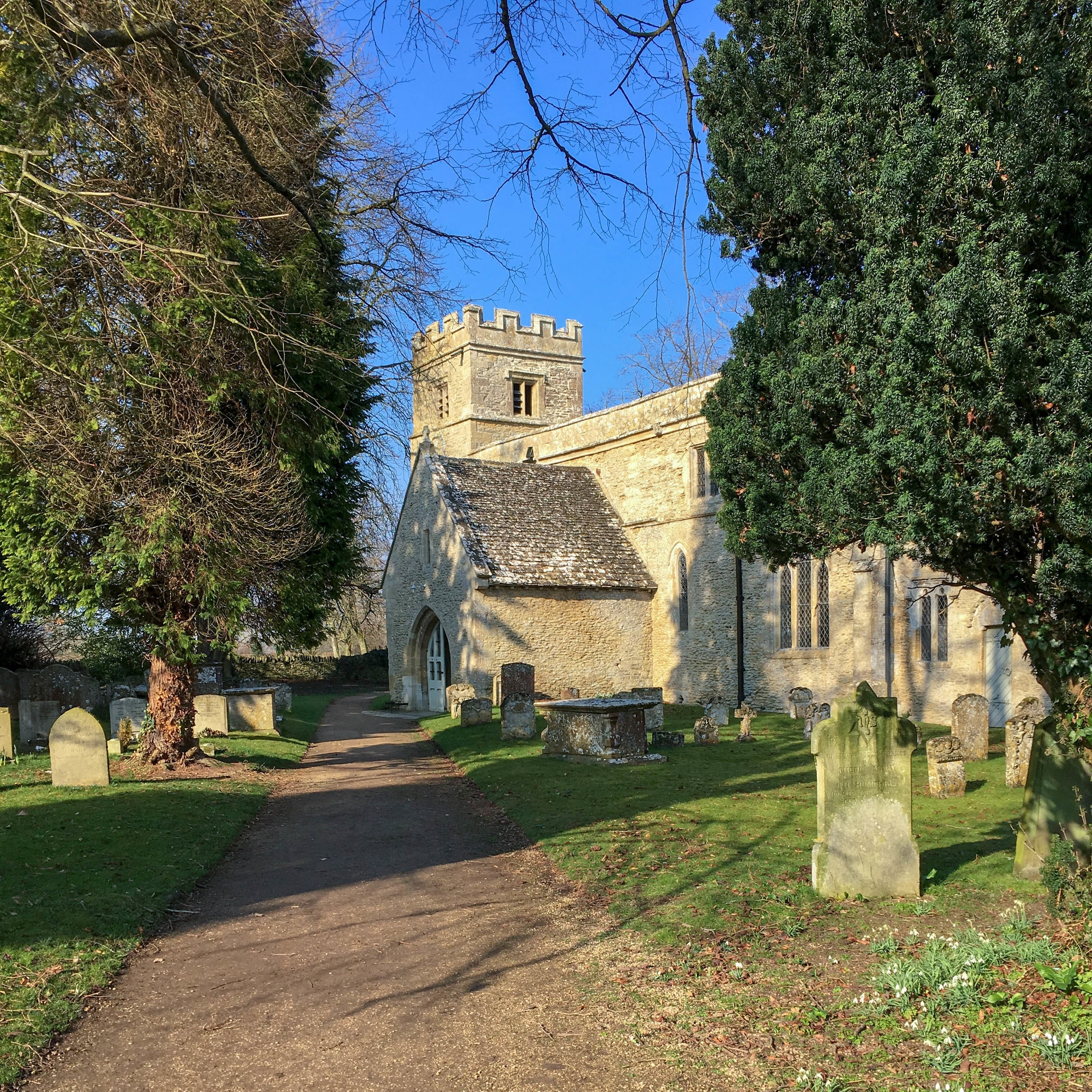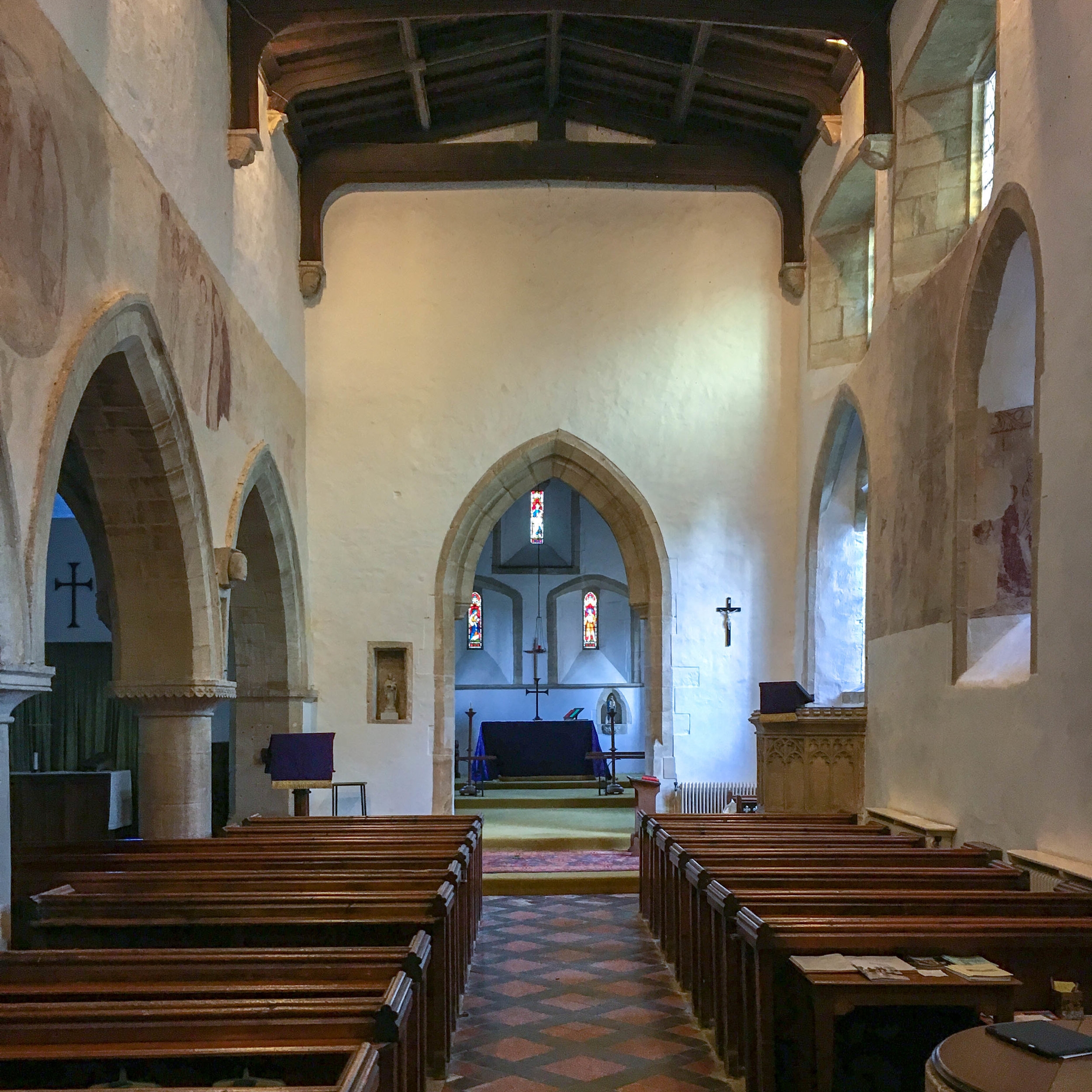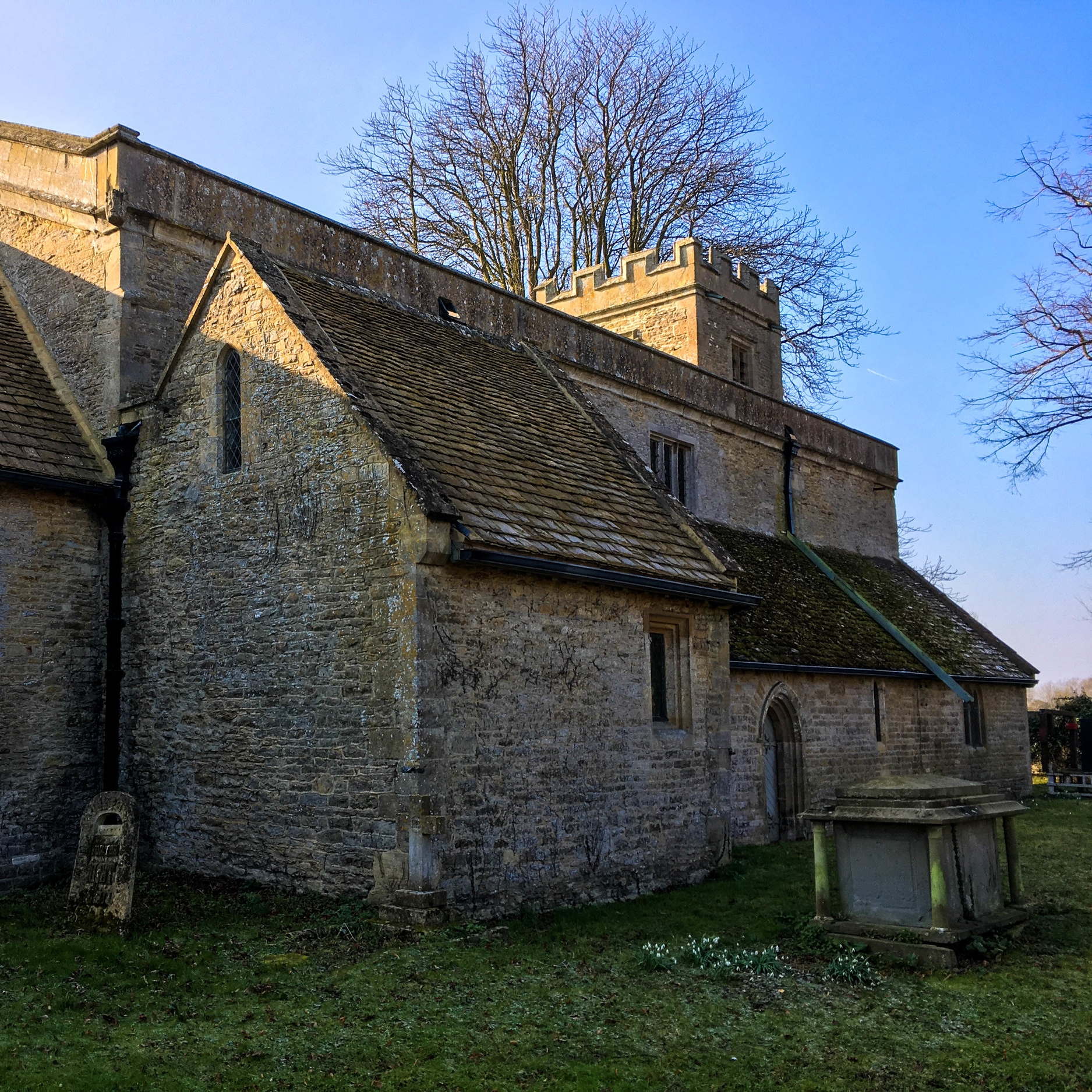The earliest part of Black Bourton Church, the Chancel, was presented to Oseney Abbey in 1180 by Hugh de Burton and Ralphe de Murdac. The three lancet windows at the east end are unusual and distinctive of this period. The nave, north arcade and the font are from 1180, but in the 13th century changes were made to the north wall of the nave, including the addition of a north transept, and two lancet windows installed in the south wall.
The earliest record of the village, Burtone, is in the Domesday book where the land is shared by three manors. The manor in the south of the village was held by Oseney Abbey, until the Dissolution when it passed to Christ Church. The manor in the north of the village came into the possession of the Hungerford family through marriage in the 15th Century. The Hungerford family suffered financial decline and after the enclosure most of Black Bourton came under the ownership of the Duke of Marlborough.
James Lupton was Vicar from 1827 until his death in 1873. James Lupton persisted in the construction of a school to improve literacy in the village, and began the restoration of St Mary's in 1866. During the restoration the north wall was rebuilt and two lancet windows installed. The stained glass by Clayton Bell is from 1866. The restoration revealed pre-reformation wall paintings, however, before James Lupton could return from London to restore them, his curate chose to have the paintings white washed once more. It was not until 1932 that the wall paintings were finally restored. The wall paintings depict scenes from the life of the Saviour and from English history of the period - Saint Thomas à Becket canonised in 1174 and Saint Richard of Chichester canonised in 1262.










